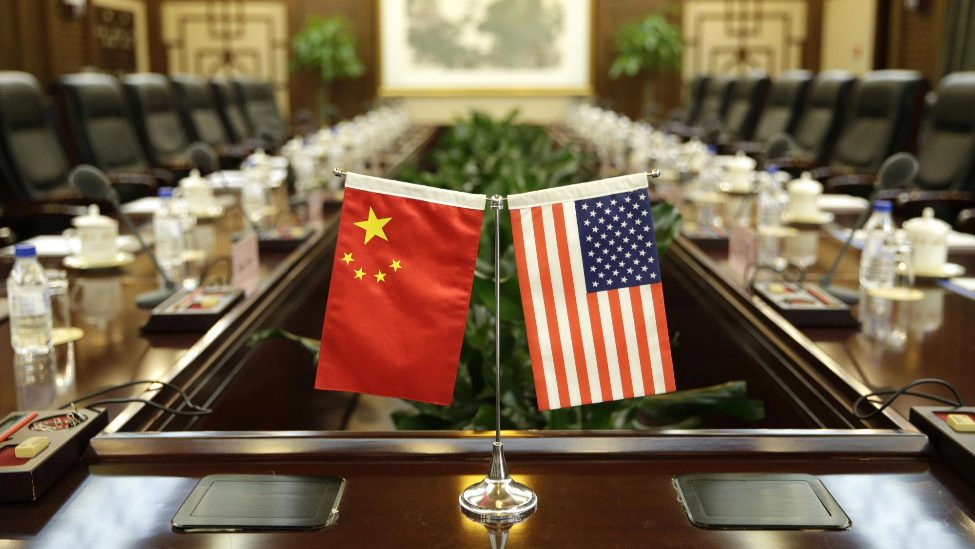The trade relationship between China and the United States has long been a key pillar of the global economic landscape. The recent release of the China-U.S. Geneva Trade Joint Statement is poised to have far-reaching implications across numerous industries. For many businesses, including ZMS Cable, the statement presents challenges and opportunities.

In the context of global economic integration, policy shifts between the world’s two largest economies often trigger ripple effects, like a butterfly effect, across various sectors, and the cable industry is no exception.
The joint statement acknowledges the importance of bilateral trade for both nations and the global economy, emphasizing the value of a sustainable, long-term, and mutually beneficial relationship. Following recent discussions, both sides expressed confidence that continued dialogue can resolve trade-related concerns. Guided by openness, communication, cooperation, and mutual respect, the two countries have committed to relevant policy adjustments.
U.S. Commitments:
Adjustments to tariffs imposed on Chinese goods (including those from Hong Kong and Macau).
Suspension of the 24% tariff outlined in Executive Order No. 14257 (April 2, 2025) for an initial 90-day period, while maintaining a 10% tariff.
Cancellation of additional tariffs specified in Executive Orders No. 14259 and 14266 (dated April 8 and April 9, 2025).
China’s Commitments:
Similar suspension of the 24% tariff as per Tariff Commission Announcement No. 4 (2025), with a retained 10% tariff.
Cancellation of additional tariffs from Announcements No. 5 and No. 6 (2025).
Suspension or cancellation of certain non-tariff countermeasures against the U.S. enacted since April 2, 2025.
The cable industry is highly competitive, with numerous domestic and international brands vying for market share. While ZMS Cable has established a strong presence in China, maintaining and growing its footprint in the global market remains a challenge. Domestically, the competition revolves around price, product quality, and innovation, while internationally, ZMS faces formidable competitors from cable powerhouses in Europe and North America.
ZMS Cable has consistently invested in research and development. Its product range includes power cables, communication cables, and industrial cables. The company has achieved notable technical capabilities, producing cables that meet international standards. In particular, its fire-resistant cables have demonstrated superior performance in demanding applications, and its insulation technology for extra high voltage cables stands out even among leading global brands.
ZMS Cable has developed a broad distribution network across both domestic and international markets, participating in many major construction and energy projects. However, its international market share remains limited, with a concentration in developing regions. Penetration into U.S.-linked markets still lags and presents room for growth.
Lower Import Costs for Raw Materials:
If ZMS imports certain raw materials from the U.S., such as high-performance plastic additives or advanced copper-processing equipment, the removal of tariffs will directly reduce procurement costs. For instance, a 5%–10% cost reduction in copper equipment due to tariff cuts could significantly enhance production efficiency and price competitiveness.

Improved Export Competitiveness:
With U.S. tariffs on Chinese cable products being lowered, ZMS could gain a pricing advantage in the American market. Previously uncompetitive due to high tariffs, its products could now be re-priced more attractively, potentially boosting export volumes.
Reevaluating the U.S. Market:
As one of the world’s largest consumers of cables, the U.S. offers substantial opportunities in power infrastructure and construction. With the easing of trade tensions, ZMS can revisit its U.S. market strategy, strengthening market research, promotional efforts, and developing tailored products for American customers.
Boosted Global Market Confidence:
The easing of trade tensions between China and the U.S. sends a positive signal to global markets. This increased confidence may help ZMS secure more international partnerships. In global tenders for infrastructure projects, stable trade relations can position ZMS as a more reliable choice.
Access to Advanced U.S. Technologies:
Improved trade relations pave the way for technical cooperation with U.S. cable companies and research institutions. This includes areas like new cable material development, where the U.S. leads. ZMS aims to leverage such partnerships to accelerate its R&D and offer more cutting-edge products.
Attracting International Talent:
A stable trade environment may also help ZMS attract skilled professionals from the U.S. and beyond. With greater openness, international experts may be more willing to work at ZMS, bringing fresh perspectives in engineering, innovation, and management.
Despite the positive joint statement, future trade policies remain susceptible to shifts in domestic politics or renewed protectionist sentiment, especially in the U.S. ZMS must remain cautious and avoid overreliance on the U.S. market when planning long-term strategies.
Domestic Pushback from U.S. Cable Brands:
As ZMS gains entry into the American market, it will likely face strong resistance from well-established local players with superior brand recognition and local distribution. To compete effectively, ZMS must enhance its value proposition through quality, service, and pricing.
Rivalry from Other Global Players:
European and Japanese cable manufacturers will not sit idly by as ZMS expands. These competitors may respond with aggressive pricing or product innovation, forcing ZMS to continually improve its core competencies to stay ahead.
Differences in regulatory and technical standards between China and the U.S. pose additional challenges. ZMS must ensure its products fully comply with American safety and performance requirements, which may require additional investments in certification, testing, and quality control.
Continuous Innovation:
ZMS will increase investment in core cable technologies such as insulation materials and conductor design. Establishing a long-term innovation mechanism and attracting top-tier talent will raise product value and technical differentiation.
Product Quality and Brand Building:
From raw material sourcing to finished product inspection, ZMS will implement rigorous quality control across all production stages. Meanwhile, the company will enhance brand visibility through advertising, trade shows, and digital promotion in global markets.
Diversified Market Strategy:
Beyond the U.S., ZMS will continue to explore markets in Southeast Asia, Africa, and South America. This diversified approach helps mitigate risks from geopolitical uncertainty.
Trade Policy Monitoring:
A dedicated team will track international trade policy developments, especially between China and the U.S., and provide timely guidance for market strategy and product planning.
Close Collaboration with Suppliers and Clients:
Strengthening ties with suppliers ensures material stability and cost control. At the same time, customized solutions for clients can help increase satisfaction and loyalty.
Participation in Global Industry Alliances:
ZMS will actively join international cable industry associations to foster collaboration and stay involved in global standard-setting efforts, enhancing its voice on the global stage.
ZMS Cable views the China-U.S. Geneva Trade Joint Statement as a new growth opportunity, albeit one that comes with its own set of challenges. The company is committed to adapting to these changes through innovation, strategic flexibility, and international cooperation. Amid this backdrop of improving bilateral relations, ZMS aims to strengthen its position both at home and abroad, contributing meaningfully to the global cable industry’s advancement.
Furthermore, this joint statement offers valuable insights for the broader cable sector. It highlights the importance of readiness, agility, and cooperation in navigating global trade dynamics—lessons from which other brands can benefit as they tackle emerging opportunities and challenges in the global market.